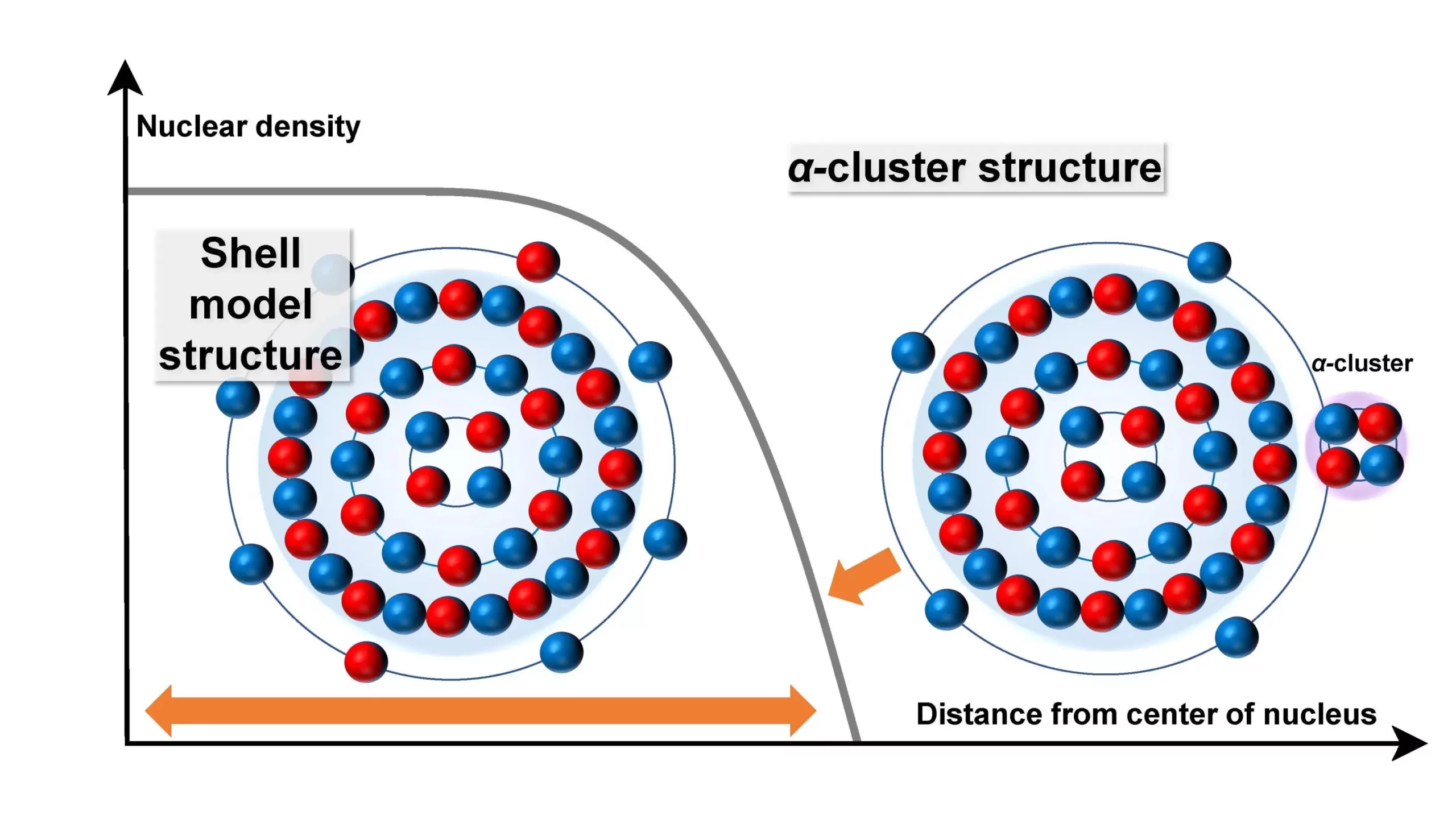At the heart of matter lies a realm that is not only captivating but also complex and deeply mysterious—the world of atomic particles. While these infinitesimal entities escape our direct observation, their interactions and configurations are defining aspects of modern physics. Recent research from Osaka Metropolitan University has substantially advanced our understanding of how the structure of atomic nuclei, specifically titanium-48, varies based on the spatial arrangement of protons and neutrons. This groundbreaking study challenges long-held beliefs about nuclear organization and suggests a multifaceted approach to understanding atomic structure.
New Insights into Titanium-48’s Structure
The research team, led by Maito Okada, Wataru Horiuchi, and Naoyuki Itagaki, meticulously examined whether titanium-48 (with its 22 protons and 26 neutrons) possesses a shell model or an alpha-cluster configuration. The shell model traditionally depicts nuclei as having a symmetric structure where nucleons occupy discrete energy levels, akin to the structure of electrons in atomic orbitals. In contrast, the alpha-cluster model presents a more dynamic visualization: nucleons can cluster in small groupings, leading to an asymmetrical arrangement that more accurately reflects the realities of certain isotopes.
One of the pivotal methods employed by the researchers involved simulating high-energy collisions between protons and alpha particles on titanium-48. Notably, this methodology produces insights into how nucleons behave near the nucleus’s surface—one dimension of atomic structure that had remained partially understood until now. By unraveling these behaviors, the study proposes that the nuclear configuration of titanium-48 is not static; rather, it shifts between shell-like symmetry and an alpha-cluster formation based on the interaction context.
Breaking Barriers in Nuclear Research
The implications of this research extend far beyond the confines of titanium-48. “These results upend the conventional understanding of nuclear structure,” Horiuchi remarked, lending weight to the potential significance of their findings. Not only do these insights challenge existing models that have dominated the field, but they also promise to offer fresh perspectives on processes like alpha decay, a phenomenon that has perplexed scientists for almost a century. The connection to the Gamow theory of nuclear decay hints at a potentially robust framework that could unravel decades of ambiguity surrounding heavy nuclei behavior.
In a world where traditional paradigms about nuclear physics often dictate research trajectories, this study signals an essential shift. By embracing the dynamic nature of nuclear configurations, researchers can explore new avenues for investigating how atomic structures influence the properties and behaviors of matter on a fundamental level.
The Path Forward
As the study of nuclear physics continues to advance, the revelations surrounding titanium-48 represent a crucial chapter in our ongoing quest for knowledge. The methods and discoveries presented by the OMU research team stand as a testament to the strength of modern theoretical models and highlight the importance of interdisciplinary collaboration. In an arena as intricate and evolving as nuclear physics, these insights empower the scientific community to rethink established constructs and foster innovative approaches for future exploration. The narrative of atomic particles is far from complete, and as we delve deeper, the answers we uncover could redefine our understanding of the universe itself.

